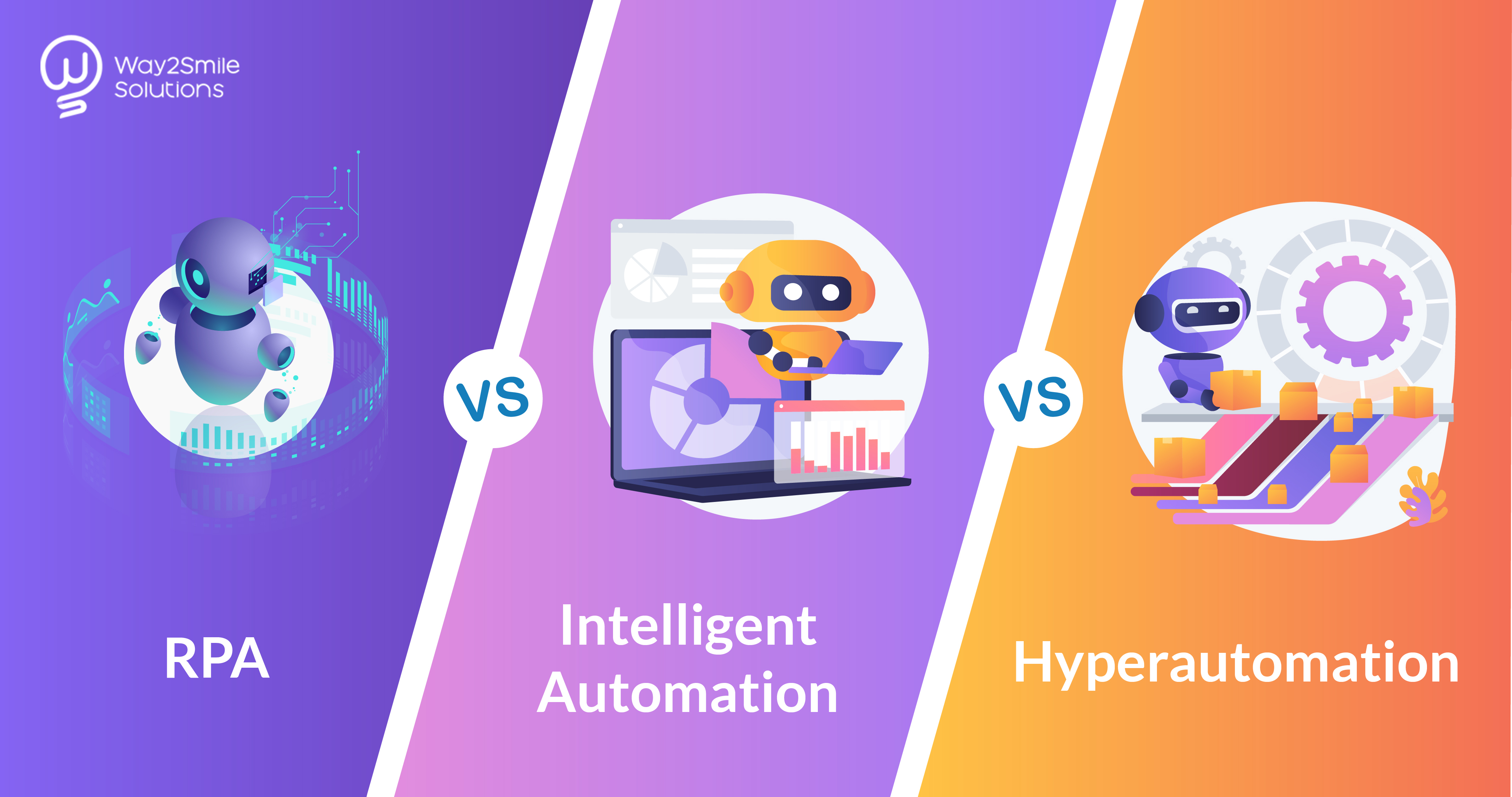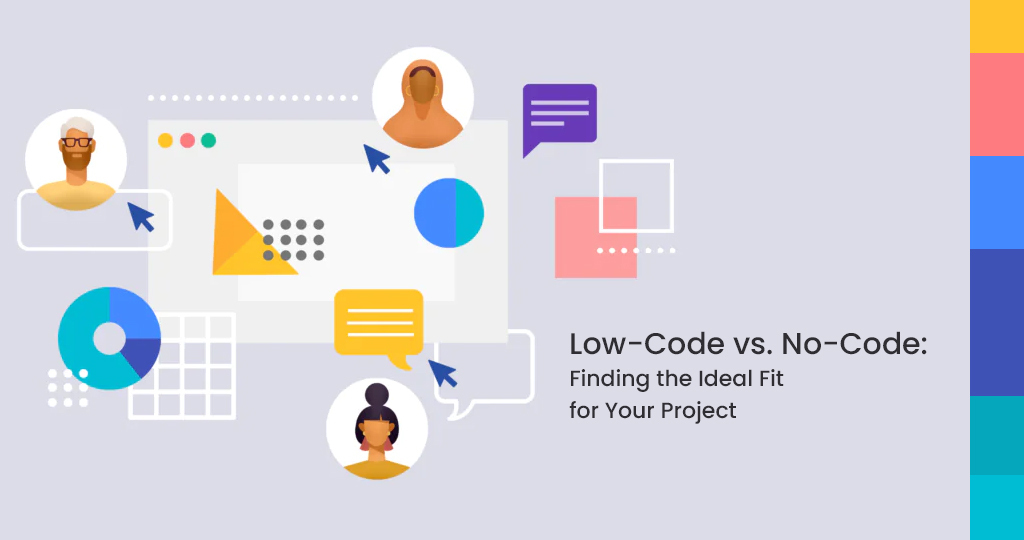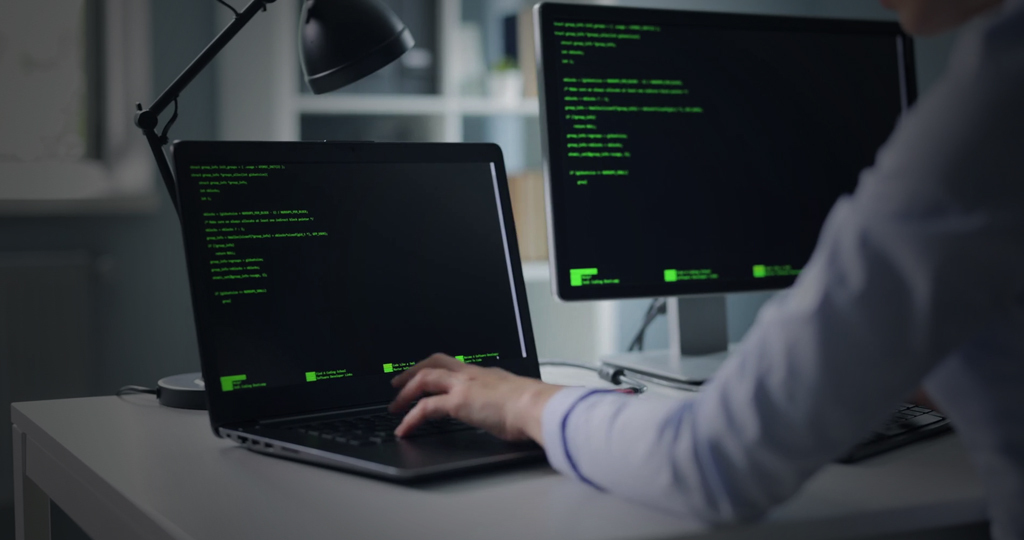There have been quite a huge number of options when it comes to choosing automation software. There are plenty of terms introduced in the market which are developed by analysts, software vendors, and solution integrators as they try to provide their own spin on the market. In this blog, we have discussed the major differences between Robotic Process Automation (RPA), Automation, and Hyperautomation.
RPA vs Intelligent Automation vs Hyperautomation:
Robotic Process Automation (RPA):
RPA makes use of robots or bots which is defined as software agents that would interact with applications just like a person could. Without defining specific programming interfaces, a process analyst could define which parts of an application a process used and then train the robot to submit the changes according to a set of rules. The application could be based on Windows applications, web pages, mainframe applications, Java apps, or even home-growth applications that were written via top-notch technology platforms. These bots follow rules to interact with any of these applications, either simple rules such as creating reports and mailing them or other complex rules that involved many steps.
These steps might include evaluating specific fields in the application and then following those rules such as checking the balance of the inventory, etc. If it is less than a certain amount, issue a warning email, otherwise process the transaction, and initiate the transfer to the location listed on the purchase order. This technology acts as a foundation layer upon which Intelligent Automation and Hyperautomation are built. These concepts usually require the RPA platform to allow interaction with the applications and without programming the interactions. Without RPA, automating communication would require many new connectors to enable Artificial Intelligence to grab the data from and initiate actions to the various corporate systems that contain the information required for processing.
Intelligent Automation:
Intelligent Automation also referred to as Cognitive Automation links Artificial Intelligence with the interactive capabilities of Robotic Process Automation. A couple of concepts that IA links together are thinking and doing. RPA is great at doing and has several capabilities to manage works through rules, but there are some aspects of executing work that requires thinking before action can happen. Some of this thinking work involves reading documents, using Character Optical Recognition (OCR) to collect the data into a form that computers can make use of! Then Intelligent Document Processing (IDP) can be used to understand the document type so it can be processed appropriately.
For instance, any business which has been engaged in processing invoices will tell you that nearly every company has their own format for sending an invoice to their customers. Because of this non-standardized way of sending invoices, companies typically employ people to read the images of documents and type the information into the accounting systems. Depending on the number of invoices, this might require a large number of resources within the organization to keep up with the volume. By building IA to read and understand the documents using IDP then processing the results appropriately with RPA, the solution can eliminate the amount that people are engaged in manual efforts such as typing information into the system.
In addition to invoice processing, Intelligent Automation can also be used for engaging Natural Language Processing (NLP) platform, an automated process that can read emails that provide insights into questions being asked to support team or to a chatbot that is allowing customers to interact in real-time with the company. Added to the supporting decisions that the thinking part of intelligent automation offers, the doing is a critical component that cannot be overlooked. RPA and AI together provide a compelling combination of extracting information from various corporate systems and analyzing the data using powerful algorithms.
With the capabilities offered by RPA, Artificial Intelligence would require special connections to database systems to pull the data it needs to evaluate, as well as coding for Application Programming Interface (API) so that the AI decisions can yield into an action. Undoubtedly, the future of intelligent automation is at a greater pace.
Hyperautomation:
Finally, when speaking about Hyperautomation, it possesses the concept of Intelligent Automation and extends it to include additional applications. RPA when combined with Business Process Management (BPM) tools, AI, and Analytics are integrated to create a workflow processing framework that enables decision-making and analysis towards AI algorithms while capturing data on the operations of the business. This type of framework lends itself to a more complex interaction of different AI technologies such as OCR, IDP, and NLP since they interact with the data from the company and metadata about the way the company routes work and processes information.
The major goal is to create a digital twin organization (DTO) that can approximate the operations of the company in a way that can support additional modeling to enhance the operations. For instance, a DTO will be responsible for capturing data about pricing and sales to model the impact of handling the profitability in specific markets. This Digital Twin model is based on the previous historical data that could impact pricing changes on Logistics, warehousing charges, personnel costs in the shipping sector, supply chain change requirements, and the complete profitability. These changes could be modeled in real-time across the entire company be it a limited or selective market pricing changes applied.
Systems would offer automated feedback that could make adjustments whenever needed or personnel staffing for multiple shifts and implement those changes to various systems while keeping track of everything in real-time. Thus, hyper-automation in banking and other major industries can change the way the business operates.
Conclusion:
With the advancement of technologies in the market, clearly Robotic Process Automation, Intelligent Automation, and Hyperautomation will continue to exist since better AI engines support decision-making within the operations of the company. Initiating might be a difficult task but implementing them in your organization can build various layers. Being one of the RPA Companies, we help businesses in making them true.







